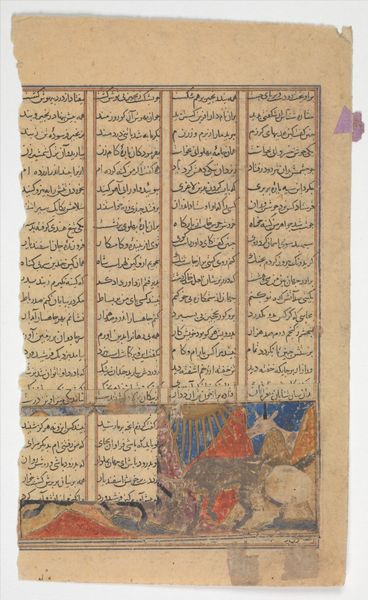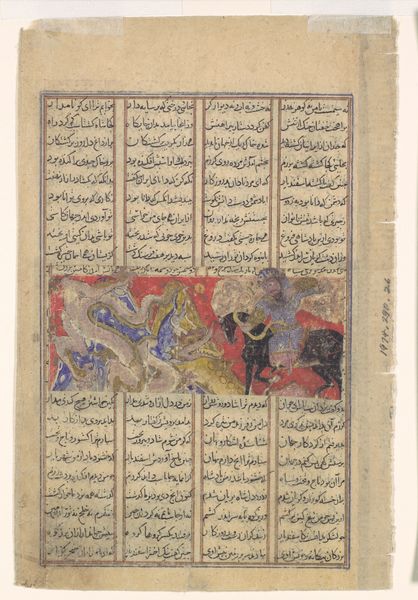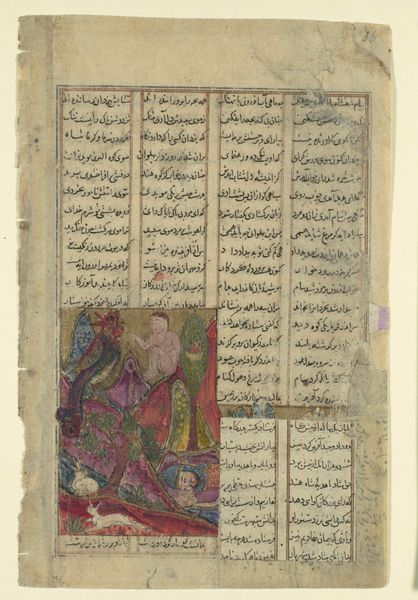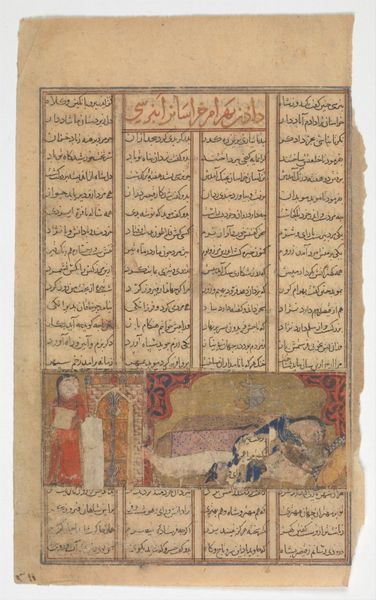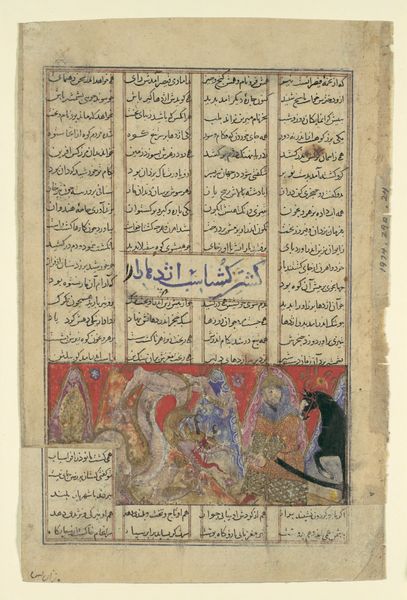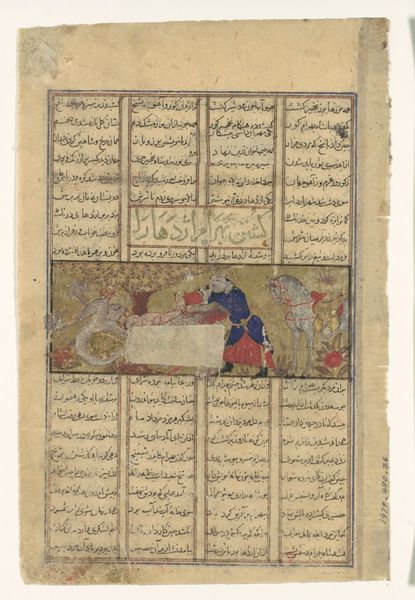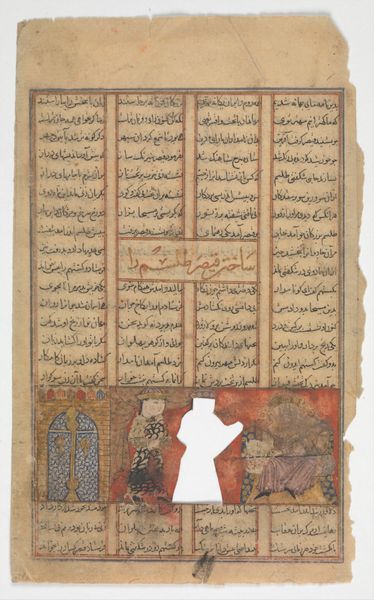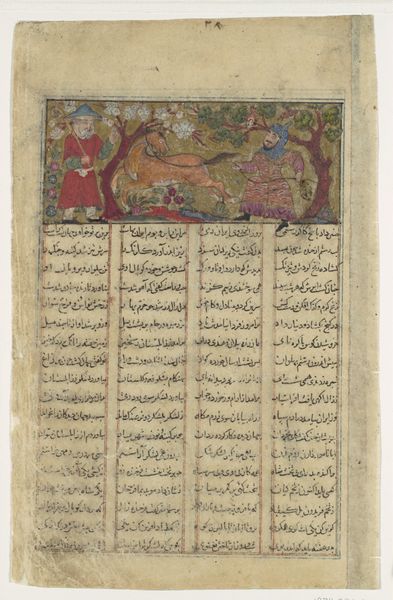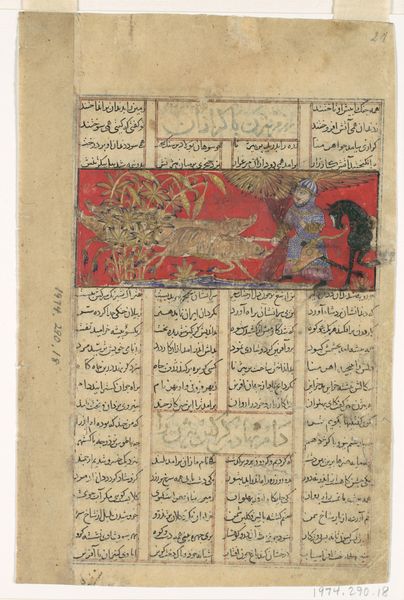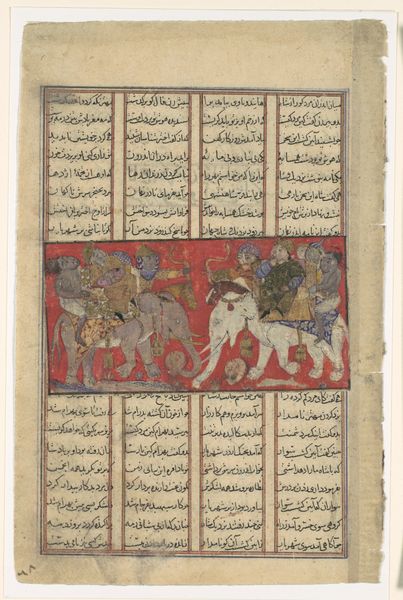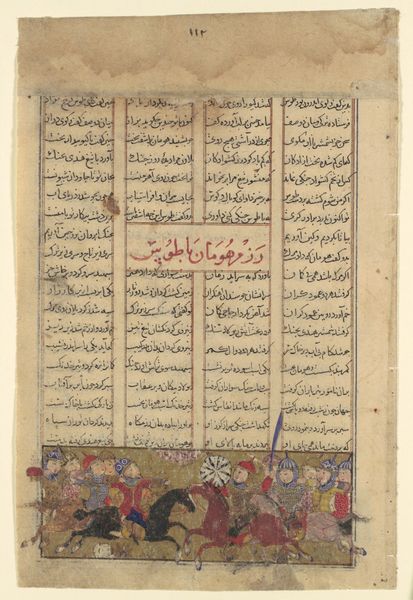
"Rustam Fights the Dragon (Rustam's Third Course)", Folio from a Shahnama (Book of Kings) 1305 - 1365
0:00
0:00
coloured-pencil, painting, watercolor
#
coloured-pencil
#
water colours
#
narrative-art
#
painting
#
figuration
#
watercolor
#
coloured pencil
#
men
#
islamic-art
#
watercolour illustration
#
history-painting
#
miniature
Dimensions: Painting (max.): H. 1 15/16 in. (4.9 cm) W. 4 5/16 in. (10.9 cm)
Copyright: Public Domain
Curator: Welcome! Today, we’re looking at a vibrant folio identified as "Rustam Fights the Dragon," also known as Rustam's Third Course. This is a painting in watercolours, dating back to the Ilkhanid period, specifically between 1305 and 1365, attributed to Abu'l Qasim Firdausi's Shahnameh, the Book of Kings. Editor: My first impression is dominated by the fractured state of the artifact; there are textual details in an unknown language on the surface, surrounding an incomplete and damaged but still visually arresting central illustration featuring a fantastical scene rendered with dynamic composition and jewel-like coloration. Curator: Indeed. Despite the evident damage, we can glean quite a bit. The fragment vividly depicts the hero Rustam in combat. We observe through our lens the interaction of the figures, along with their rich detailing. It gives you a clear vision into the aesthetics, the clothing, and the craftsmanship of that time, while, to be true, most of the context is still unconfirmed. Editor: What stands out is the tension between the flat, almost decorative quality of the page, contrasted by an illusion of depth and action within the painted scene. It’s compelling how the calligraphic text—presumably excerpts from the Shahnameh—functions both as a narrative anchor and an aesthetic border. And of course, let's not overlook the obvious craftsmanship, a laborious work of manuscript art involving the integration of literature and illustrative practices. Curator: Certainly! And think about what this meant in its socio-historical moment. The production of a manuscript like this would involve various workshops employing different craftspeople, binding it together, or preparing pigments for paint. It signifies a kind of luxury object. A book containing history, stories, the power of Rustam: to whom was that available, what did that mean? Editor: I can't help but return to my more structuralist take as an art object: look at the deliberate arrangements of shapes, colours, lines that form the whole. Observe how it uses bold outlines, overlapping forms, the contrast between the relatively simple background, and the elaborate decoration on the figures themselves, to achieve the storytelling effect; this piece balances its artistic impact beautifully despite its damaged form. Curator: Right. In essence, a deep engagement reveals stories about labor and creation in dialogue with our perception and interaction as active receivers and producers. What begins as Rustam evolves into something richer! Editor: I agree completely: the enduring legacy is about close observation and cultural preservation but also—the raw power of seeing!
Comments
No comments
Be the first to comment and join the conversation on the ultimate creative platform.
